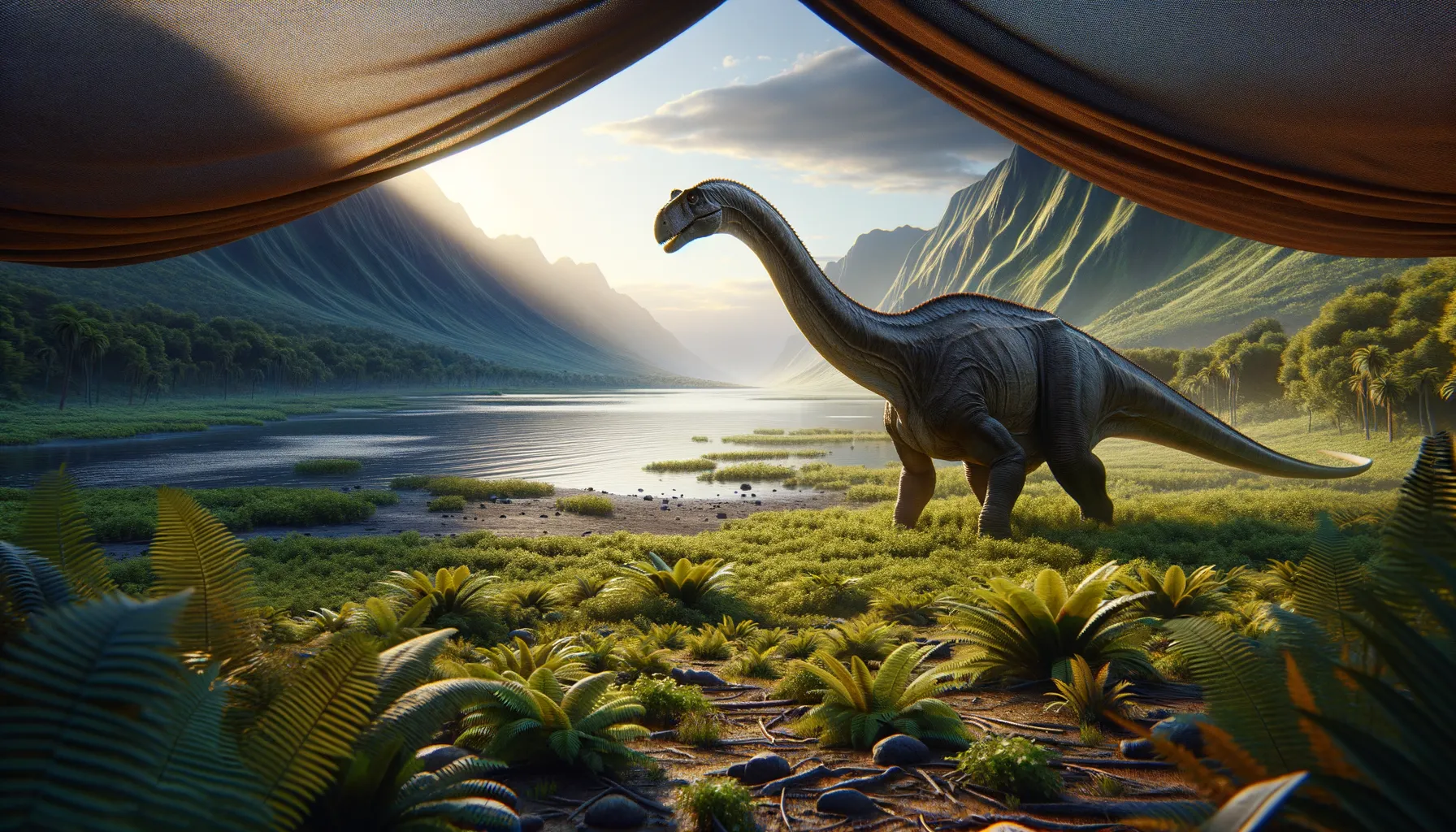
Agrosaurus
An early giant of prehistoric times!
Period
Triassic
Length
About 4 meters long.
Height
Approximately 2 meters tall.
Weight
Estimated to be around 300 kilograms.
Agrosaurus is believed to have been one of the earliest dinosaurs. As a long-necked herbivore, it roamed the prehistoric landscapes primarily feeding on plants. While initially thought to be an Australian dinosaur, some studies suggest it might have been confused with another species, illustrating the challenges paleontologists face when classifying ancient life based on fragmentary evidence.
Diet
Agrosaurus was a herbivore, feeding primarily on prehistoric ferns and other plant material. Its teeth were adapted for grinding vegetation, which suggests it spent a lot of its time grazing.
Hunting
As a herbivore, Agrosaurus did not hunt other animals. It likely spent much of its time processing plant material for sustenance.
Environmental challenges
Agrosaurus faced environmental challenges that included fluctuating climates during the Triassic period. The shifting landscape likely required it to adapt to varying food availability. Additionally, volcanic activity and changing sea levels might have impacted its habitat.
Speed
Likely slow due to its size and build.
Lifespan
Unknown due to limited fossil records.
First discovery
Fossils first found in Australia, 19th century.
Fun Facts
- Agrosaurus was once thought to be the earliest dinosaur discovered in Australia, although its true origins have been debated over the years.
- The name 'Agrosaurus' means 'field lizard,' reflecting the Greek roots of 'agros' meaning field or country and 'sauros' meaning lizard.
- Fossils attributed to Agrosaurus were initially classified as belonging to a specimen from Australia, but later analysis suggested they might have been misidentified.
- Based on certain fossil records, Agrosaurus was thought to be related to the early stage of dinosaur evolution, making it an interesting subject for paleontologists.
- The Agrosaurus was a type of prosauropod, which were early herbivorous dinosaurs that walked on two legs, much like some of their later, much larger relatives.
Growth and Development
Agrosaurus likely hatched from eggs and underwent significant growth during its early life stages. Its development would have involved gradual increases in size, adapting its diet and behavior as it matured. The limited fossil record makes detailed insights into its growth patterns obscure.
Habitat
Agrosaurus inhabited regions that were lush with vegetation, providing ample food resources. Areas with forests and open regions would have been its primary dwelling places. The environment was likely warm, accounting for the variety of plant life it depended upon.
Interaction with other species
Agrosaurus might have coexisted with other early dinosaurs and reptiles of its time. It likely needed to navigate spaces where carnivorous species also roamed. Competition for resources could have dictated interactions with other herbivorous species.
Natural lifespan
Its natural lifespan remains uncertain due to scarce fossil records.
Reproduction
Reproduction most likely involved laying eggs, similar to other early dinosaurs. Nesting behaviors might have included selecting safe and hidden areas to protect offspring from predators.
Social behaviour
Agrosaurus may have lived in small herds or groups for protection. Group living would have provided safety in numbers against potential predators. Its social structure remains speculative due to limited evidence.
Fossil locations
The original fossils attributed to Agrosaurus were discovered in Australia. Subsequent re-evaluation suggested these might belong to other species, complicating its classification and historical context. This has generated discussions about the precise identity and phylogeny of Agrosaurus.
